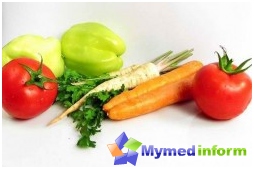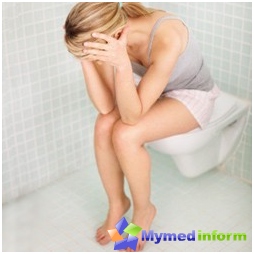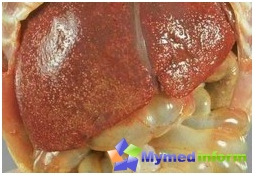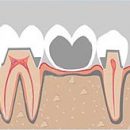Chronic pyelonephritis usually wave. So, periods of remission and periods of aggravation of the disease can be celebrated. As for direct inflammation in the renal tissue, it is often preserved for several months and even years.
Causes

The reason for the development of this disease is usually an infection that penetrates the urinary ways. In particular, there is an intestinal stick, streptococcus, staphylococcus, ENTEROKOKK, SINEGNAYS, as well as microbial associations. Thus, chronic pyelonephritis is often caused by ordinary microorganisms that live in our intestines. These microorganisms acquire harmful properties under the action uncontrollable treatment with antibiotics. With these bacteria, it is usually very difficult to deal. The fact is that they are very diverse and even able to adapt to the effects of drugs on them.
Disease pathogens can get into the body in various ways. So, for example, the causative agent of the disease can penetrate the body through blood from the carious tooth, through the inflamed furuncle or due to inflammation of the almonds. In women, the causative agent of the disease can get into the body through a chronic focus of inflammation in the uterus. In men, the infection can penetrate through the prostate gland. In addition, the causative agent can get along the ureter from the inflamed bladder.
The hitting of pathogens in the kidneys, however, does not always lead to the development of a purulent inflammatory process. After all, in order for microbes to be multiplied and could develop pyelonephritis, It is necessary that several conditions are present. In particular, there must be a violation of the outflow of urine, lymphs and blood from the kidney. Also for the development of the disease it is necessary for the presence of any prior disease.
Some role in the occurrence of chronic pyelonephritis is played by L-forms of bacteria. These bacteria are capable of remaining in the body for quite a long time. In the kidneys, they usually fall with blood.
Symptoms

Often, several antimicrobial drugs are prescribed several antimicrobial drugs to suppress the mixed flora of bacteria. At the same time, you need to ensure that the medicine coped with infection. So, if after four days, the tests are not improved, and the temperature is not reduced in two days, it means that the selected medicine does not cope with the pathogens. In this case, you need to choose the other medical preparation as soon as possible.
It is important that antibiotics are used strictly in accordance with the instructions. For example, chemicals such as sulfonamides are able to settle in kidneys in the form of stones. Therefore, to prevent harmful effects, the medicine based on these substances needs to be powered by mineral water or milk. Other drugs, for example, such as tetracycline, can not be convaled by milk. Such antibacterial agents like nitrofurans need to drink water to prevent Great, nausea and vomot.
In addition, the patient needs a gentle diet. In addition, it is necessary to avoid supercooling and colds. If on the background of the disease there were still some infectious pathologies, they also require timely treatment.
Diet

Patients who are on treatment in hospital conditions, MirSes recommends Diet number 7, which is characterized by increased fluid consumption. Patients can be equipped with vegetables, berries, fruits, as well as products rich in vitamins and potassium.
If the treatment of chronic pyelonephritis is carried out at home, the daily diet of patients with normal arterial pressure includes approximately 90-100 grams of proteins, about 80-90 grams of fats and 450 grams of carbohydrates. At the same time, the common calorie food is about 3-3.2 thousand kilocaloria. The daily rate of the table salt in this case is 8-10 grams, and the daily rate of fluid is 2 liters. Food is accepted by small portions 4-5 times a day.
Remained products include stale bread, low-fat meat and fish, vegetarian soups. Vegetables can potatoes, carrots, beets, pumpkin, tomatoes and zucchini. Also a variety of cereals. As for eggs, they can only be prepared. Fresh cheese, cream, butter and sour cream are allowed from dairy products. You can also sunflower oil. In limited quantities, you can garlic, onions, dill, horseradish and parsley. You can add a variety of berries in the menu, fruits. Beverages - Kisli, compotes, fastening tea, as well as vegetable and fruit juices.
At the same time, various smoked meats, meat and fish broths are prohibited. In addition, it should be strictly limited by the use of sweet, spices, jam, honey, jam, jama.









